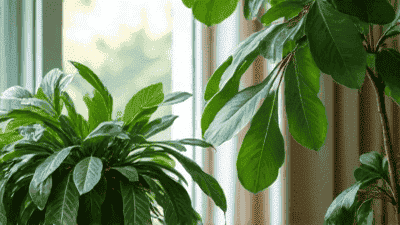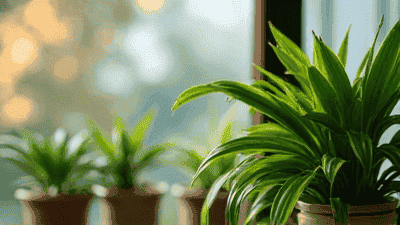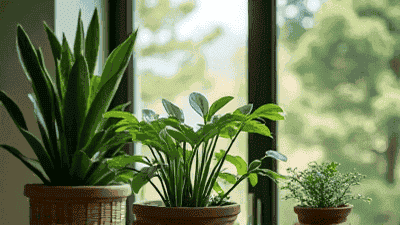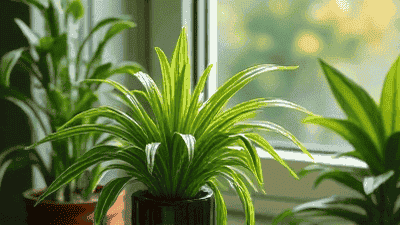
Indoor plants bring natural beauty and a sense of tranquility to our living spaces. However, they can also attract unwanted pests, which can be detrimental not only to the plants themselves but also to our homes. Fortunately, nature provides us with a solution: certain plants possess pest-repelling properties that can help protect both our greenery and our living areas from common household pests.
Before delving into specific plants, it is important to understand the types of pests that commonly invade indoor spaces and why they are drawn to certain environments. Common pests include:
These pests are often attracted to indoor plants due to warmth, humidity, and food sources. While traditional pest control methods can be effective, many individuals are seeking more natural solutions to safeguard their plants and homes.

Integrating pest-repelling plants into your home offers numerous advantages:
Here are some of the most effective indoor plants known for their pest-repelling properties:
Lavender is renowned not only for its delightful fragrance but also for its ability to repel various pests, including mosquitoes, moths, and flies. The essential oils contained in lavender flowers emit a scent that is unappealing to many insects.
Peppermint is another powerful pest repellent known for its ability to deter ants, spiders, and rodents. The strong menthol scent is often enough to keep pests at bay.
Citronella is famous for its use in repelling mosquitoes and is a common ingredient in outdoor candles and sprays. Its strong citrus scent can help keep flying insects at bay.
Basil is a culinary herb that doubles as a natural pest repellent. Its aroma repels mosquitoes and flies, making it an excellent choice for kitchen herb gardens.
Rosemary is not only a flavorful herb but also a natural repellent for mosquitoes and other pests. Its strong scent can deter unwanted insects.
Sage is an aromatic herb known for its pest-repelling qualities. It can help deter mosquitoes and flies, making it a great addition to any indoor garden.
Thyme is another herb with pest-repelling capabilities. Its aroma can deter moths and other unwanted insects, making it a useful addition to your home.
Marigolds are known for their vibrant colors and ability to repel nematodes and other garden pests. They can be particularly effective in deterring aphids and whiteflies.
Aloe vera is not only known for its healing properties but also for repelling common pests like flies and mosquitoes. Its thick leaves can also act as a barrier against some insects.
Chrysanthemums contain pyrethrins, natural compounds that repel insects like mosquitoes, roaches, and ants. They are a colorful addition that brings pest protection.

When integrating pest-repelling plants into your indoor spaces, consider the following strategies:
Place pest-repelling plants together in clusters or near affected plants to enhance their repellent effects. This arrangement can create a natural barrier against pests.
Position plants in areas prone to pests, such as windowsills, kitchens, or near entry points. The scent released by these plants will deter pests from entering your home.
Use pest-repelling plants to create a border around your home or designated outdoor spaces. These borders serve as a natural line of defense against invaders.
If space is limited, consider using pots and containers to house pest-repelling plants. This allows for flexibility in placement and makes it easier to manage the plants.
Ensure that your pest-repelling plants are well cared for. Healthy, thriving plants are more effective at deterring pests. Prune as needed and monitor for signs of stress or infestations.
While incorporating pest-repelling plants is an effective strategy, consider combining it with other natural pest control methods for comprehensive management:
Essential oils, such as peppermint, tea tree, and eucalyptus, can be diluted and used as sprays to repel pests. These oils are effective and provide a pleasant aroma to your living spaces.
Diatomaceous earth is a natural powder composed of fossilized algae. When sprinkled around plants, it acts as a physical barrier that dehydrates and kills soft-bodied insects.
Insecticidal soaps made from natural ingredients can effectively combat pests without harming beneficial insects. Apply these solutions directly to affected plants.
Neem oil is derived from the seeds of the neem tree and is known for its pest-repelling properties. It disrupts the reproductive cycle of various insects and effectively deters them.
A mixture of garlic and chili pepper can create a natural deterrent spray. Blend garlic cloves and chili peppers with water, strain, and spray on plants to repel unwanted insects.

Incorporating pest-repelling plants into your home offers an effective and natural solution for controlling household pests. The benefits of these plants extend beyond pest control; they enhance air quality, improve aesthetics, and support sustainable living practices.
By understanding the various plants that provide pest-repelling properties and implementing strategies to integrate them into your home, you can create a healthier, more inviting living space. The choice to embrace nature's solutions not only protects your indoor plants but also fosters an eco-friendly lifestyle.
As you embark on your journey to incorporate pest-repelling plants, remember that consistency in care and attention to your indoor garden will yield the best results. With a bit of knowledge and commitment, you can enjoy a pest-free home while reveling in the beauty of your thriving indoor plants.